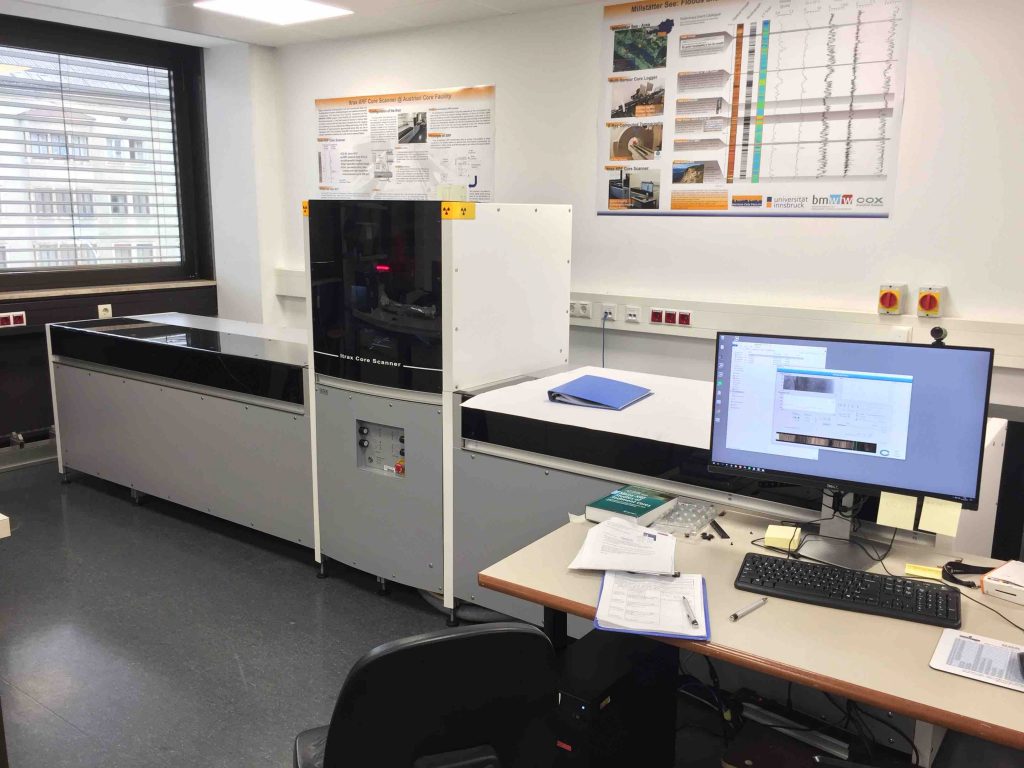I’m back at the University of Innsbruck to go on with the palynological analyses from the Lake Mondsee, as part of the Beyond Lake Villages project. I’m currently learning how to operate an Itrax XRF Core Scanner.

This machine recovers semi-quantitative data of many chemical elements along sediment cores. It is very interesting to understand both the theory and the practical aspects behind the XRF* data. That should make the interpretation of these data easier, and more meaningful, specially thanks to the book Micro-XRF Studies of Sediment Cores from Croudace & Rothwell. The most common interpretations of these elements’ profiles are dry-wet and/or warm-cold conditions, rainfall, organic content, mining activities, and erosion. The latter is of particular interest for my studies. Combined to other evidence of anthropogenic activities—from palynological and charcoal data, for instance—it can strengthen my suggestions of afforestation and agro-pastoral activities in the study site catchment area.